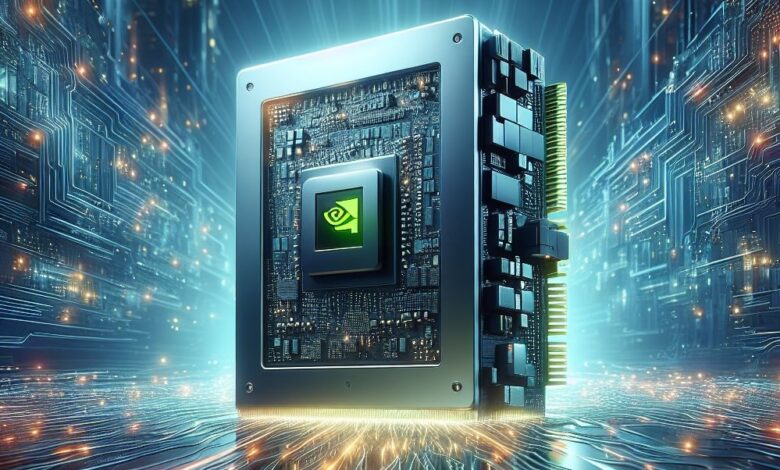Nvidia’s H100 Chip Sets New Standard in AI, Adding Over a Trillion Dollars in Value”

In a significant leap for computer technology, Nvidia Corp’s Data Center chip, the H100, has emerged as a pivotal force in the Artificial Intelligence (AI) industry, propelling the company’s valuation to over a trillion dollars. Launched in 2023, the H100 not only solidified Nvidia’s position as a leader in AI but also underscored the immense economic potential of generative AI technologies. With a substantial surge in demand, some customers face wait times of up to six months, highlighting the crucial role the chip plays in advancing AI capabilities.
A Glimpse into the Heart of H100
Named after computing pioneer Grace Hopper, the H100 chip represents a significant advancement over traditional Graphics Processing Units (GPUs). Originally designed to enhance gaming experiences through realistic visuals, GPUs like the H100 have been optimized to handle vast amounts of data and computations at unprecedented speeds. This makes them ideal for training large Language Model Models (LLMs), a task that demands immense computational power. Nvidia’s foresight in adapting its GPUs for parallel processing tasks in the early 21st century has paid off, allowing the company to dominate the AI market.
The H100 boasts the ability to accelerate the training of LLMs four times faster than its predecessor, the A100, and responds to user demands thirty times faster. This efficiency is critically important for AI development, as the speed in training models directly translates into a competitive edge and innovation.
Market Leadership and Competitive Edge
Nvidia’s journey to becoming a leading force in AI began with its groundbreaking work in graphics chips and its strategic pivot to leverage its technology for AI applications. Today, it commands nearly 80% of the accelerators market in AI data centers, surpassing competitors like AMD and Intel with its ecosystem and rapid innovation. Despite efforts by competitors and internal chip development by tech giants like Amazon, Google, and Microsoft, Nvidia remains largely unrivaled.
The success of the company is not only attributed to hardware superiority but also to its comprehensive ecosystem, including the CUDA programming language that enables custom AI applications. This, coupled with rapid updates to both hardware and supporting software, keeps Nvidia at the forefront of its competitors.
What Lies Ahead for Nvidia
Nvidia shows no signs of resting on its laurels. The company has announced plans to launch the H200 later this year, succeeding the H100, followed by a more significant update with the B100 model. This roadmap indicates Nvidia’s commitment to continuous innovation and its strategy to enhance its leadership in the AI sector. CEO Jensen Huang’s proactive approach in advocating for these technologies to both governments and private entities hints at a broader vision for the role of AI in the future technological landscape.
Both AMD and Intel are working to strengthen their game, with AMD’s MI300X targeting Nvidia’s market share and Intel focusing on AI-specific chips. However, Nvidia’s integrated approach, combining superior hardware performance with a robust programming and deployment ecosystem, gives it a distinctive advantage. The company’s strategy of facilitating upgrades for existing customers further solidifies its market position.
The H100 chip from Nvidia has not only succeeded in reshaping the AI industry but has also demonstrated the immense value and potential of generative AI technologies. As the company continues to lead this charge through continuous innovation and strategic market positioning, it remains at the forefront of the technological revolution reshaping industries and companies worldwide. With the upcoming H200 and B100 on the horizon, Nvidia is poised to continue its dominance in the AI sector, pushing the boundaries of what is possible with artificial intelligence.




